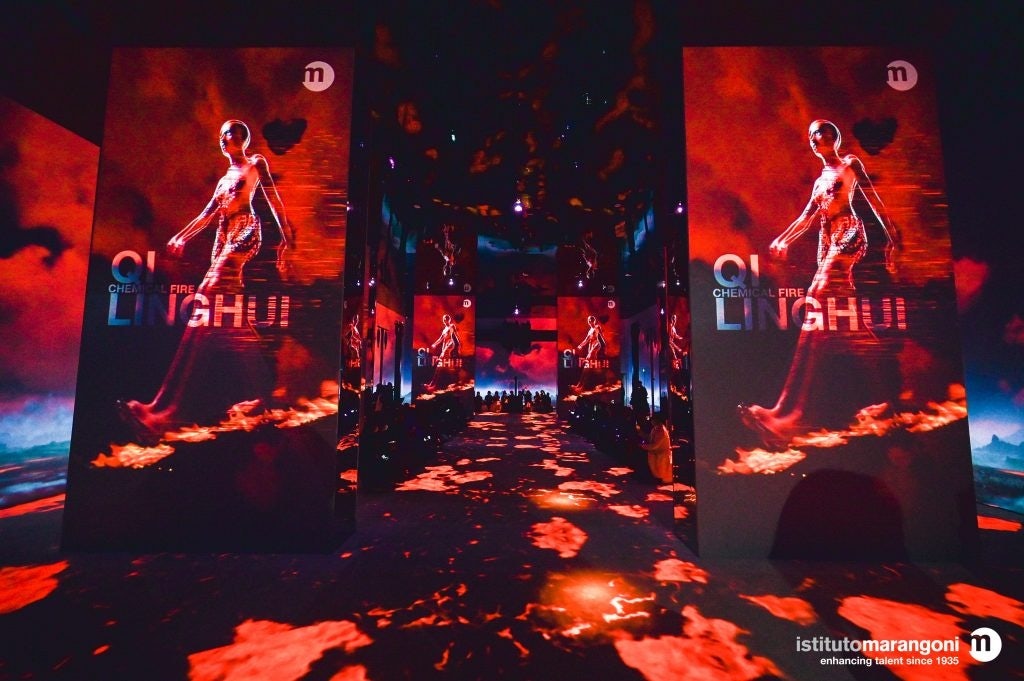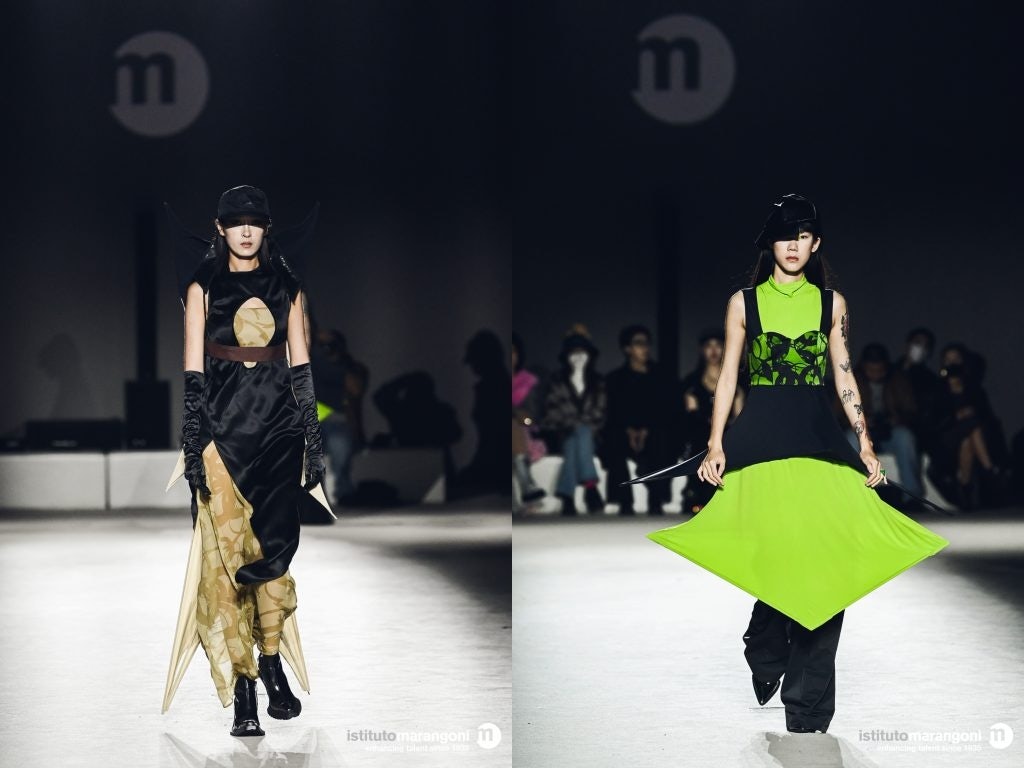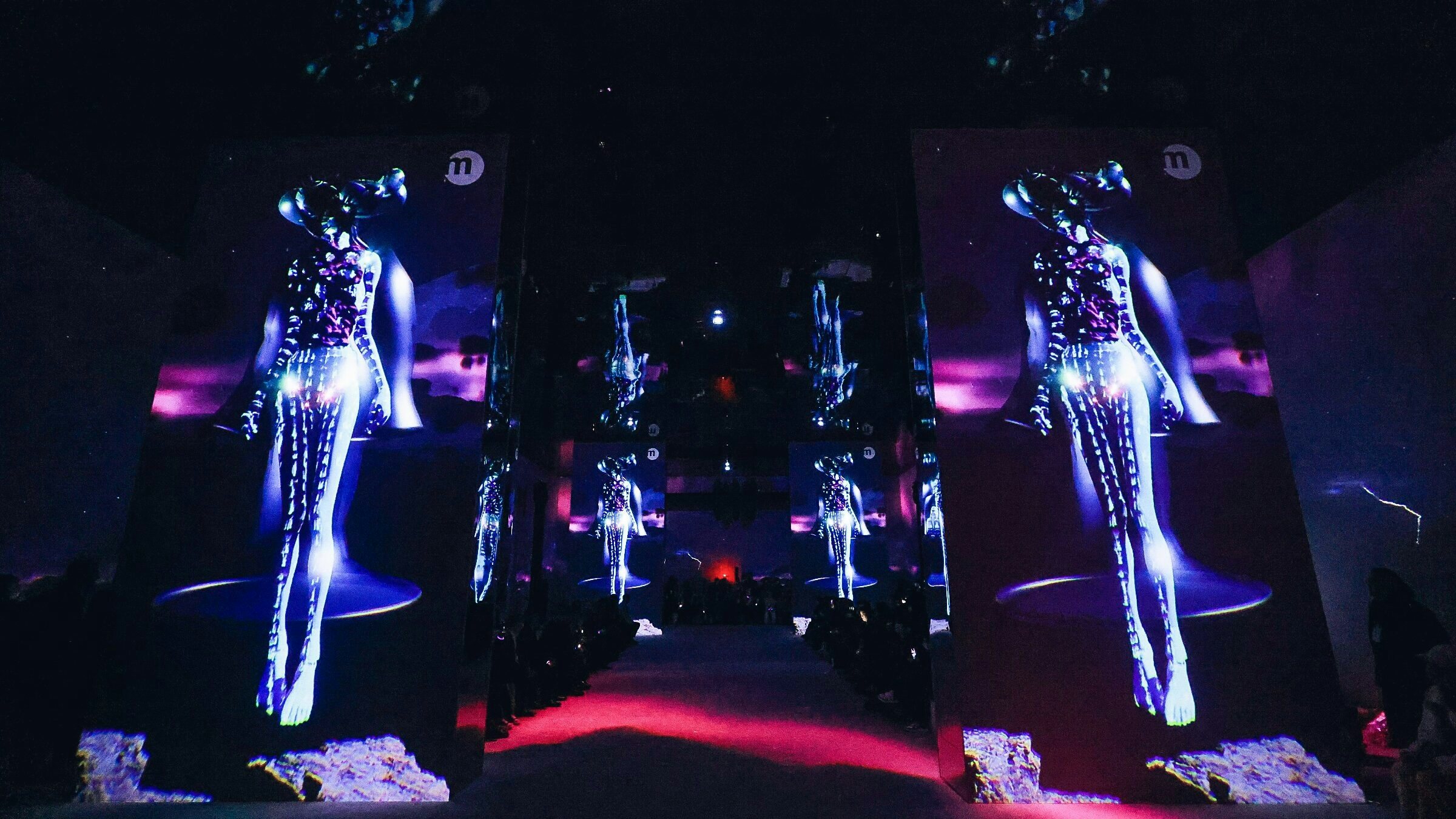This November, leading fashion college Istituto Marangoni partnered up with the Italian Cultural Institute in Shanghai to hold its annual graduates’ show. Held at the multimedia space Temple of Light on the Bund, it took viewers on an immersive voyage into the future, one millennium from now — 3022. Under the moniker Zeta, which stands for the letter Z’s pronunciation in Italian, the show intended to represent the new design force of China’s Generation Z.
The runway kicked off with the 3D CGI film “Zeta 3022,” produced under the mentorship of alumni Zhou Jun and Li Yushan, founders of the pioneering Chinese independent label Pronounce. This trailblazing Web3 initiative saw students Zhou Jie, Liu Yubing, Lan Yutong, and Qi Linghui create four capsule collections captured on digital avatars. In this, the project simulated the potential environmental impact of human existence, as well as technological advances in our future world.

Guests were then brought back to 2022 to enjoy a real-life runway show. In total 12 avant-garde collections were presented by Istituto Marangoni’s graduates. Each piece fell under one of the four central themes — The Origin, Dystopia, Dune, and Rebirth — with the collections given curious names such as “1m2 of Air,” “Metamorphose,” or “2Na + 2H2O,” reflecting Gen Z’s exploration of new fields and their forward spirit. To reach a wider audience the show was broadcasted live on local and global social platforms, such as WeChat, Xiaohongshu, Weibo, Douyin, and Instagram.
Cheng Yingting, the chief operating officer of Istituto Marangoni China, told Jing Daily that Zeta was devised to showcase the mindset of this young generation, who speak their own languages to communicate with their community. “As an educator, we would like to give them a stage,'' she stated. “We are proud to say that not only the fashion design part and the show concept but also the creative direction and the marketing campaign were conceived, produced, and realized by our graduates. And we, as a school, supported them during this important journey.”
That night, Sun Haoyue received the award for the most outstanding fashion collection. His collection “Metamorphose” experimented with contrasting shapes — sharp and soft, as well as heavy and light — to express themes of the human experience, and of deformation caused by physical injury. Sun explained how “during the lockdown period, due to lack of materials, some ideas were hard to realize. However, this inspired me to reflect on the relation between human beings and their habitats. This is how my idea was born. The biggest challenge was realizing design experimentations with limited resources.”

Despite ongoing COVID-19 lockdowns, the 12 students managed to deliver impressive looks, which conveyed their out-of-this-world ideas with original designs and tailoring. This indicates the tremendous potential of young talents to inject fresh perspectives into the industry. “How far can we go with innovative teaching methods during a pandemic?” was the question posed by Cheng.
In recent years China has become a hotbed of creativity, seeing talents like Pronounce, Susan Fang, and Uma Wang rising on the global stage. Young generations are reshaping global understanding (often stereotyping and outdated) of the domestic fashion industry: they are driving the transition from Made in China to Designed in China. International institutions are recognizing the trend and rushing to build campuses and networks in the Chinese fashion center: Shanghai. Paris International Institute of Fashion & Art is located within the Shanghai University of Engineering Science. And others such as NABA, Central Saint Martins, and Parsons are strongly leveraging their alumni community to attract talents for their international schools or online courses.
China’s robust supply chain, mature e-commerce, and strength in social selling will only accelerate the growth of the sector. Fashion schools will play a pivotal role in fostering the next creatives. Istituto Marangoni’s local presence, global influence, and long-term commitment to providing students with a platform to demonstrate their creativity have created a critical competitive advantage in the saturated education market.
While 3022 remains unforeseeable (beyond creative imaginings), Cheng is confident about the near future. “Students have been empowered with the digital tools necessary to fulfill their creative potential. Studying at Istituto Marangoni means evolving. Now, they are officially fashion professionals. In the future, they will become the anchor of the industry.”


